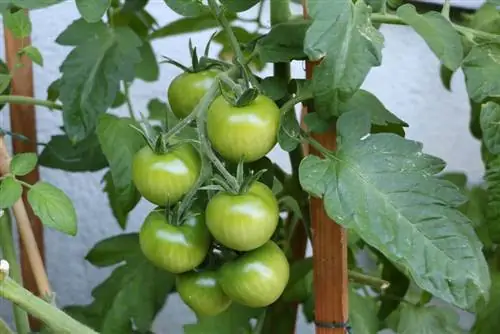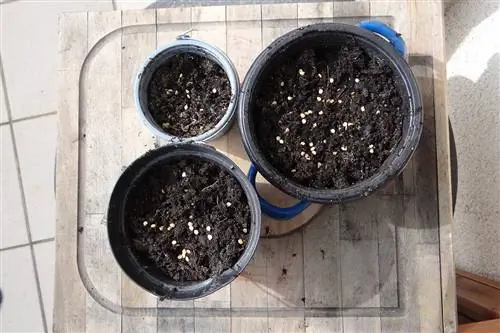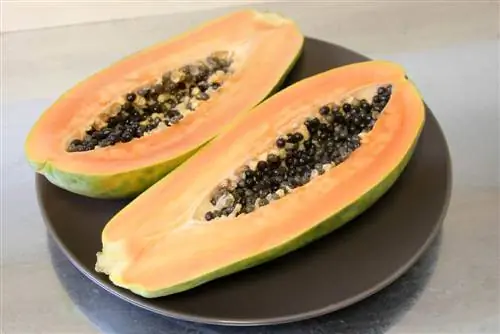- Author admin [email protected].
- Public 2023-12-17 03:39.
- Last modified 2025-01-24 12:45.
What could be nicer for a hobby gardener than harvesting the fruits from your own garden and proudly using them in the kitchen. A very popular and tasty way to do this is to plant tomatoes in your own garden. Here, the hobby gardener does not necessarily have to resort to pre-grown tomato plants from the hardware store or garden center; everyone can grow them in their own garden, on the windowsill or in the mini greenhouse. However, here are some tips and care instructions to follow in order to become a successful tomato grower for your own use.
What should be considered when sowing and growing
In just one to two weeks, the small, inconspicuous tomato seeds germinate and grow into delicate plants. The seeds can therefore be sown from mid-March. Here it makes sense to use a bowl that is filled with special potting soil to provide the necessary nutrients. Simply distribute the seeds evenly over the soil in the bowl and cover with a thin layer of soil. If you want to be on the safe side and like to keep an eye on your children, you can use special indoor greenhouses, so the hobby gardener doesn't always have to go into the garden to water and observe his tomato plants. A sunny spot on the windowsill is ideal for setting up the small greenhouse, because initially the seedlings need between 20 degrees and 24 degrees to germinate. The soil should always be kept moist, but waterlogging should be avoided. Now it's time to wait and water until the small plants are approx.have formed four to five leaflets. Only then can the tender tomato plants be separated, i.e. pricked out. Each plant now gets its own pot to continue growing.
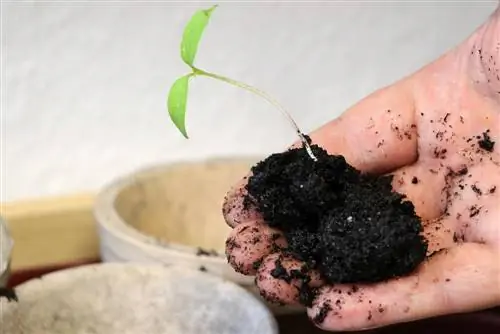
Small plastic pots, which are light and can be easily transported in a box, are particularly suitable here. In the individual pots, the small plants form new roots and quickly become stronger and more robust. When watering, it is important to ensure that the water is not poured directly over the plants but rather at their feet. Before the small plants finally go out into the garden, which is around mid-May, the tomato plants are hardened off to prepare them for the climate. To do this, the hobby gardener places the plants in a protected, sunny place during the day at approx.8 degrees outside temperature and brings you back into the warmth in the evening. Only then can the plants be planted outdoors, i.e. in the tomato house, from mid-May.
What happens next with the care of the tomato plants
Since tomato plants react quite sensitively to too much proximity and too much water, the gardener should plant the plants outdoors with sufficient distance. If they are too close together, the plants cannot dry out as well and the persistent moisture makes the plant more susceptible to diseases, especially fungal diseases. It is also important to help the plants, which are still quite small, with a stick in the ground so that they do not break off. The plants can be loosely tied to this stick. If the tomato plants are growing strongly, they have to be tied up again and again so as not to bend. The first fertilizer is only applied after a month outdoors. In order to develop enough strength for the flowers, it is important to thin out the tomato plants.
This means that the shoots growing from the leaf axils are removed with your fingers. It is not advisable to use a knife here in order not to injure the plant and thus provide a target for diseases and germs. Diseased or yellow leaves must also be removed immediately in order to direct all the energy into the main shoot of the tomato and of course into fruit formation. If you neglect to remove the shoots about twice a week, the trunk and fruit will not grow satisfactorily. In order to fertilize the tomato plants specifically at the roots, it can be helpful to place a small clay pot at the base of the plant so that the water can be applied specifically. Under no circumstances should the gardener water the plants over the foliage.
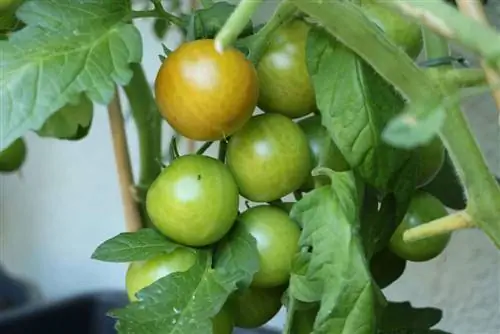
If these care tips are followed, it is no miracle to harvest fresh, juicy, red tomatoes from your own garden. From around the end of August, as the plants continue to be cared for, the newly appearing flowers will also be removed, as there will no longer be enough time until the end of the season to produce strong fruit. Depending on the variety used, the tomatoes are harvested between June and October.
Care tips in summary
- Sowing from mid-March in the indoor greenhouse
- Release outdoors from mid-May when the ground frost has passed
- pruning out the shoots growing in the leaf axils
- never fertilize over the leaves
- sunny but rain-protected location makes sense
The hobby gardener immediately notices the difference to a tomato bought in the supermarket, which was probably already harvested green due to the long transport routes and ripens during transport to a tomato freshly harvested from the garden. For this reason alone, it is worth the small effort to grow strong, robust and he althy tomato plants from the seedlings that produce tasty fruits and enrich the home dinner plate.
What you need to know about tomato care
The right location is also important. It should be sunny, warm and protected, especially from rain. Waterlogging and stagnant air are also not tolerated. It is ideal if the plants are under a roof where they cannot get wet.
The soil for the tomato plants is prepared as early as autumn. When planting itself, the soil must have a minimum temperature of 15 degrees Celsius. Organic substances (stable manure, compost) are mixed into the potting soil. Peat, loam and clay should not be used. Depending on the variety, the planting distance is between 80 and 110 centimeters. The pot ball is used to a maximum of 2/3. The tomato plants must be supported, depending on the variety, with rods, rings, stakes, strings, nets or trellises.
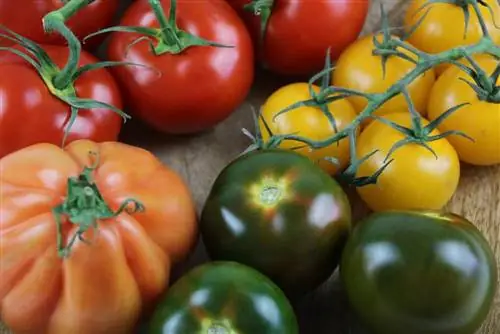
If you cover the ground around the tomato plants with mulch film or mulch tiles, you will achieve a higher soil temperature. The weeds are suppressed, ideal moisture is ensured and the risk of infection from the ground is reduced.
It is important to thin out the tomato plants, i.e. to remove the unwanted side shoots. This prevents excessive growth. Air can circulate well, the plant receives enough light and the yield is increased. You break out the shoots, don't cut them!
Yellowed and diseased leaves are regularly removed from the plant. You can also remove the lowest leaves, but only up to the height of the harvested fruit. The plants can be trimmed so that they do not grow too tall. The right time is around six to eight weeks before the end of cultivation (beginning of August). The cut point is three leaves above the last grape that is still harvestable.
Tomato plants need a lot of water. It is best to water in the morning. Foliage and stem bases must not be moistened. Water regularly and avoid extreme changes. It is important to avoid wet feet, i.e. no standing water!
Tomatoes are heavy feeders. They need lots of nutrients. There are special tomato fertilizers available in stores. You can use organic or mineral fertilizers.
Regular ventilation is important for tomatoes in the greenhouse, preferably automatically. The humidity must also be high.

